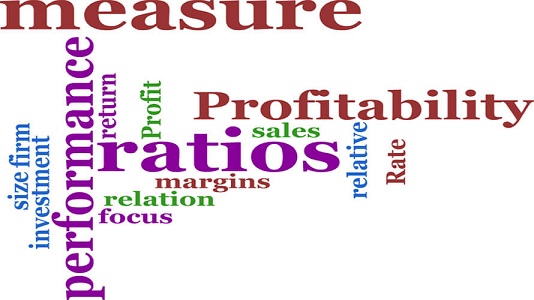Profitability Ratios
Profitability Ratios represents the final performance of the company i.e. how profitable the company. It also represents how profitable owner’s funds have been utilized in the company.
Types of Profitability Ratio:
- Return on Equity
- Earnings Per Share
III. Dividend Per Share
- Price Earnings Ratio
- Return on Capital Employed
- Return on Assets
VII. Gross Profit
VIII. Net Profit
- Return on Equity
This ratio measures the Profitability of equity funds invested in the company. It also measures how profitably owner’s funds have been utilized to generate the company’s revenues. A high ratio represents the better the company is.
Formula: Profit after Tax ÷ Net worth
Where,
Net worth = Equity share capital, and Reserve and Surplus
- Earnings Per Share
This ratio measures profitability from the point of view of the ordinary shareholder. A high ratio represents the better the company is.
Formula: Net Profit ÷ Total no of shares outstanding
III. Dividend Per Share
This ratio measures the number of dividends distributed by the company to its shareholders. The high ratio represents that the company is having surplus cash.
Formula: Amount Distributed to Shareholders ÷ No of Shares outstanding
- Price Earnings Ratio
This ratio is used by the investor to check the undervalued and overvalued share price of the company. This ratio also indicates Expectations about the earning of the company and the payback period to the investors.
Formula: Market Price of Share ÷ Earnings per share
- Return on Capital Employed
This ratio computes the percentage return in the company on the funds invested in the business by its owners. A high ratio represents the better the company is.
Formula: Net Operating Profit ÷ Capital Employed × 100
Capital Employed = Equity share capital, Reserve and Surplus, Debentures and long-term Loans
Capital Employed = Total Assets – Current Liability
- Return on Assets
This ratio measures the earning per rupee of assets invested in the company. A high ratio represents the better the company is.
Formula: Net Profit ÷ Total Assets
VII. Gross Profit
This ratio measures the marginal profit of the company. This ratio is also used to measure segment revenue. A high ratio represents the greater profit margin and it’s good for the company.
Formula: Gross Profit ÷ Sales × 100
Gross Profit= Sales + Closing Stock – op stock – Purchases – Direct Expenses
VIII. Net Profit
This ratio measures the overall profitability of the company considering all direct as well as indirect costs. A high ratio represents a positive return in the company and the better the company is.
Formula: Net Profit ÷ Sales × 100
Net Profit = Gross Profit + Indirect Income – Indirect Expenses




